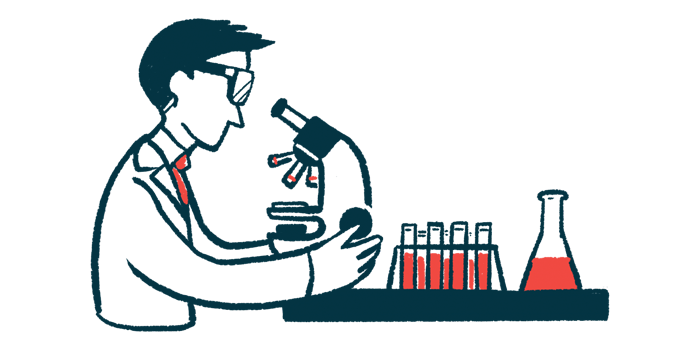Treating Very Rare EDS Type Early May Help Prevent Complications

Diagnosing and treating a very rare type of Ehlers-Danlos syndrome (EDS) early would help prevent further complications and potentially improve quality of life for patients with the condition, called arthrochalasia EDS (aEDS), a review study reports.
However, the similarities between aEDS and other health conditions make it difficult to reach an early definitive diagnosis, so genetic testing is critical, researchers noted.
The review, which also provided a compilation of aEDS symptoms and genetic causes reported to date, may help to guide future research.
The information was published in a study, “Ehlers–Danlos Syndrome Type Arthrochalasia: A Systematic Review,” in the International Journal of Environmental Research and Public Health.
EDS comprises a group of genetic diseases that affects connective tissue, which provides structure and support throughout the body. To date, 13 different types, caused by mutations in at least 20 genes, have been identified.
Some of the shared symptoms among the different EDS types are soft and overly stretchy skin, abnormal scars, easy bruising, and overly mobile, or hypermobile, joints.
“The diagnosis of EDS is no easy matter as many of its clinical manifestations can be found in other diseases or even in the general population,” the researchers wrote.
Gaining a better understanding of the features and causes of each EDS type may help to advance research into the development of potential therapies.
With this in mind, a team of researchers in Spain systematically reviewed published studies up to 2021 that provided information on arthrochalasia EDS, a type characterized by frequent hip dislocations in addition to hypermobile joints.
From the initial 84 hits, the researchers assessed 25 studies for eligibility, and included 20 in the analysis. The studies were published from 1997 to 2020.
Available data supported that aEDS — also known as arthrochalasis multiplex congenita and EDS type 7 — is a rare disorder with an unknown frequency, having been reported in about 42 patients worldwide.
Results showed that the disease is characterized by severe generalized joint hypermobility, overly extensible skin, dislocations of small and large joints, and bilateral hip dislocation at birth and throughout life.
Besides these characteristic features, less frequent manifestations have also been reported, including low muscle tone, kyphoscoliosis, mild low bone density, and tissue fragility, including atrophic scarring and easy bruising.
Kyphoscoliosis is an abnormal curvature of the spine in both lateral and posterior directions, while atrophic scars leave a sunken area on a person’s skin, often making it look pitted.
Newborns with aEDS also tend to have distinct, characteristic facial features, such as abnormally increased distance between the eyes, larger-than-expected soft spots in the skull, an especially pronounced lower-than-normal jaw, and bilateral epicanthal folds, which are skin folds of the upper eyelid covering the inner corner of the eye.
Another difference between aEDS and other types is that low muscle tone is frequently severe in affected newborns.
“Early prenatal or postnatal diagnosis can be life-saving, and early appropriate intervention can alleviate the physical and psychological suffering of the patient,” the researchers wrote.
They noted that the minimum criteria for an aEDS diagnosis are the presence of a combination of bilateral hip dislocation with overly stretchy skin or generalized joint hypermobility, and at least two of the less frequent symptoms.
The final diagnosis is made by genetic testing. The disease is caused by mutations in one copy of either the COL1A1 or COL1A2 gene, each providing instructions for making different parts of type I collagen, the most abundant building block of connective tissue.
Several studies suggest that “COL1A1-associated aEDS may be more severe than COL1A2-associated aEDS,” the team wrote.
Reviewed studies also highlighted that an aEDS diagnosis is not always straightforward, as several symptoms are shared with other EDS types and other conditions, such as Larsen syndrome, Loeys–Dietz syndrome, and cutis laxa.
Currently, treatment of aEDS focuses on managing symptoms and “a comprehensive, multidisciplinary approach is vital for treatment and prevention of complications,” the team wrote.
Recommendations are centered on surgical approaches to target bone problems and achieve walking stability, muscle-strengthening exercises to help stabilize joints, and use of anti-inflammatory medications to control pain.
People with aEDS “should have regular check-ups that address all bodily systems to prevent further complications,” the researchers wrote.
Also, “emotional support and behavioral and psychological therapy to aid in accepting and offering coping strategies to manage disability is advised,” they added.
While aEDS patients have a normal life expectancy, the disease’s associated complications usually reduce quality of life, so therapeutic approaches should also focus on maintaining or improving quality of life.
The team also noted that a case of aEDS with progressive cardiac involvement was reported. This, combined with the fact that cardiovascular tests are not usually done in this patient population, suggests that these patients should be assessed for cardiovascular symptoms.
Moreover, studies to date showed that aEDS may be associated with pregnancy or delivery-related complications, supporting the need for close monitoring of pregnant women with the disease.
Overall, this study provides “an updated report that aims to establish a solid starting point for future lines of research” in aEDS, the researchers concluded.








